Center for Simulation, Advanced Education and Innovation
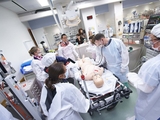
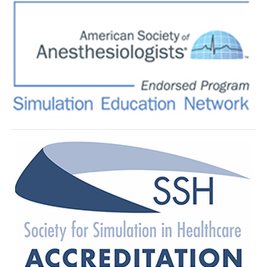
The Center for Simulation, Advanced Education and Innovation at Children’s Hospital of Philadelphia (CHOP) is a cutting-edge facility designed to enhance healthcare education and improve care. With state-of-the-art simulation technology, we offer immersive learning experiences tailored to healthcare professionals' needs.
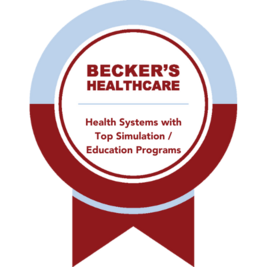
We aim to improve patient care through realistic simulations that mimic clinical scenarios. From procedural training to teamwork development, we provide hands-on opportunities for skill refinement and collaboration. The pursuit of excellence in education and innovation is a cornerstone of CHOP’s mission, fostering a culture of continuous learning and improvement. Our Simulation Center empowers healthcare professionals to deliver the safest and highest quality care.
We are accredited by the American Society of Anesthesiologists and the Society for Simulation in Healthcare.
CHOP is included on Becker’s Hospital Review's list of Simulation and Education Programs to Know.
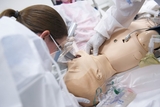
What is simulation?
Children worldwide benefit from the innovative work of our Center for Simulation, Advanced Education and Innovation. Learn more about simulation and how it improves pediatric care.
“We don’t just ask, ‘What were you doing?’ It’s, ‘What were you thinking? What was your thought process?’ Simulation is really good at getting to the why.”
Our impact
Simulation is a critical part of clinical professional education. Each year, our Center for Simulation supports hundreds of simulations ― everything from a team responding to a child who collapses to residents practicing patient sedation. Simulations provide a safe, yet realistic way for clinicians to practice technical skills, clinical decision-making and teamwork. After each simulation, the educator debriefs the team, highlighting takeaways that will make future encounters with real patients even safer.
Simulation in action
Our Center for Simulation brings practice sessions to where real clinical groups work every day. This innovative model means that nurses from the Newborn/Infant Intensive Care Unit (N/IICU) practice caring for infants in a room adjacent to the N/IICU. Fellows who must rush critically ill children from the helipad to the ICU can practice by retrieving a SimBaby manikin from a helicopter, experiencing its real noise and commotion. In addition to improved coordination, many teams follow simulation education with new ideas for systems improvements.
Our research
Our robust research program encourages pioneering research using simulation. We’re able to successfully translate and implement this research to improve provider competence on manikins and eventually on patients. All of this leads to improved patient outcomes. Ninety-five percent of our simulation research is collaborative with programs outside of CHOP, and 75% of our simulation research assesses the effectiveness of simulation education. Our program was the first in the United States to achieve accreditation in research from the Society of Simulation in Healthcare. We have conducted more than 50 studies, hold a monthly journal club and host research conferences.
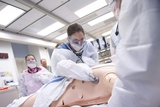
Our team
Our team members are pioneers in medical simulation, sharing their unique expertise at leading regional, national and international conferences.
Center for Simulation, Advanced Education and Innovation Fellowship
We support a robust international Simulation Education and Research Fellowship Program, with individualized development plans to meet each fellow’s educational needs. Our goal is to develop the next generation of international simulation leaders for both education and research.